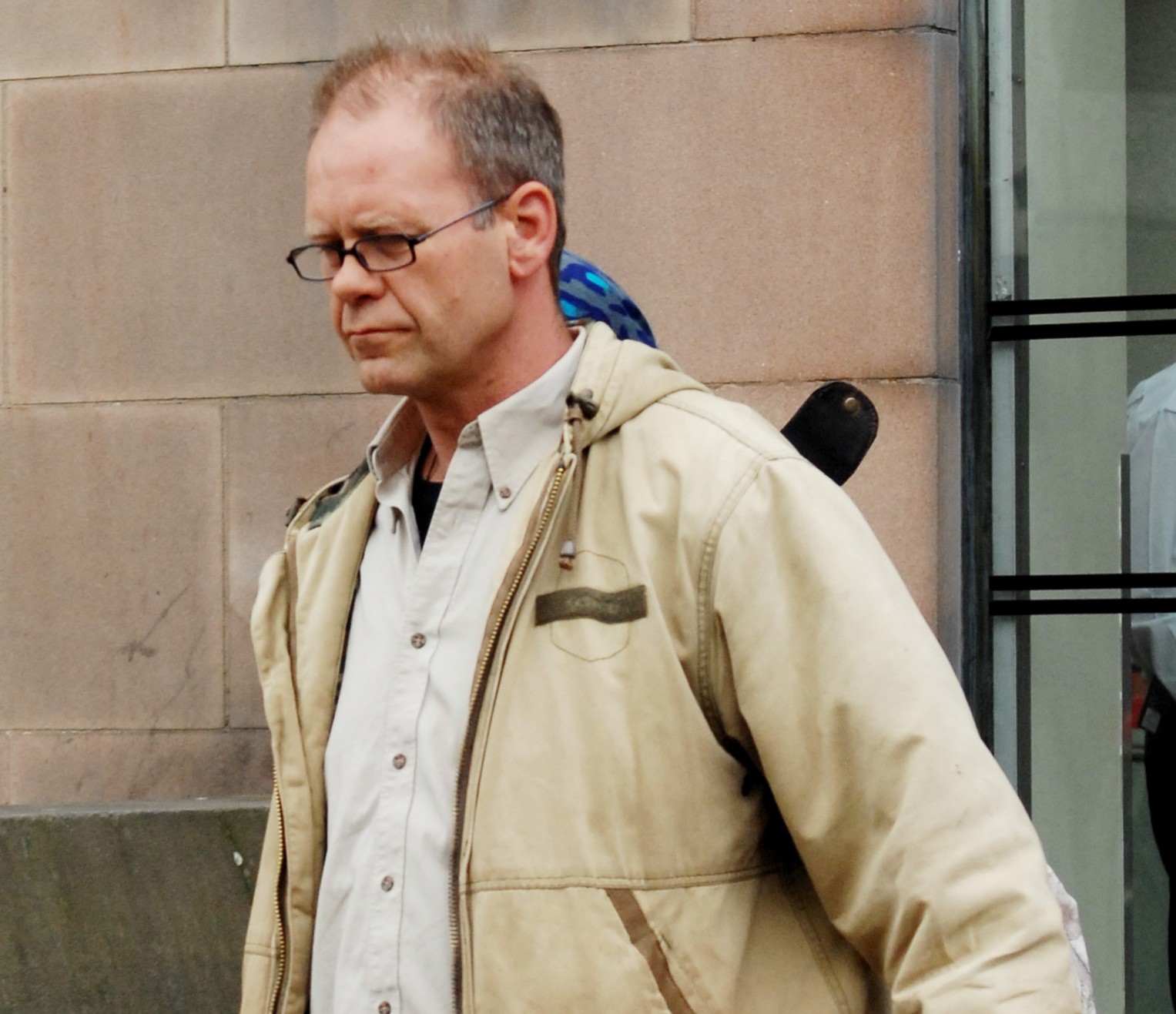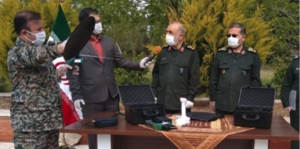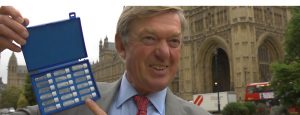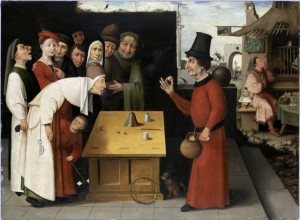The Charity Commission’s Consultation on CAM Charities. My Submission.
![By Jonrawlinson (http://www.flickr.com/photos/london/75148497/) [CC BY 2.0 (http://creativecommons.org/licenses/by/2.0)], via Wikimedia Commons](http://www.quackometer.net/blog/wp-content/uploads/800px-Aids_is_commons_in_Africa-300x225.jpeg) Tomorrow is the last day you can submit your thoughts to the Charity Commission on the charitable status of Complementary And Alternative Medicine organisations. After several years of activity by campaigner and clinical scientist Les Rose, the Commission has finally agreed to look into whether it is right to award the benefits of charitable status to groups that promote quackery.
Tomorrow is the last day you can submit your thoughts to the Charity Commission on the charitable status of Complementary And Alternative Medicine organisations. After several years of activity by campaigner and clinical scientist Les Rose, the Commission has finally agreed to look into whether it is right to award the benefits of charitable status to groups that promote quackery.
This blog has been highly critical of many quack charities. In particular, I have been very critical of the appalling activities of UK homeopaths in promoting their magic pills for the treatment of serious disease in Africa. This has resulted in threats to me. But at no time have the mainstream homeopathy organisations in the UK even acknowledged that there might be fundamental problems here with these dangerous practices. Worse, the Society of Homeopaths have welcomed onto their Board of Directors a homeopath who set up clinics in Southern Africa to treat people with HIV.
Hopefully, the regulator will strip these organisations of their charitable status. It is possible that several hundred charities could lose their status of the Commission properly followed the legislation.
Anyway, here is my submission. You still have 24 hours to put yours in.
Consultation
The use and promotion of complementary and alternative medicine: making decisions about charitable status
Response from Andrew Lewis, writer and campaigner at the Quackometer.net
Preamble
In the UK, organisations are given charitable status if they meet at set of conditions which include performing a public good. Charitable status gives various advantages to the organisation, at a loss to society of the tax that might normally accrue from their activities. This is seen as an acceptable exchange of value as the charity performs a public good. It is therefore expected that a charity has the obligation to be able to demonstrate with good evidence that it performs a public good. The Commission has a legal obligation to consider whether the organisation provides a net public good and this should involve an assessment of the available evidence that it does so.
The term complementary and alternative medicine (CAM) is itself problematic. There is an assumption in the term that the treatment being offered is a medicine and that it can be offered as an adjunctive therapy to an existing one or as a direct alternative. None of these things are true about CAMs.
If a treatment has a rationale and an evidence base then it is no longer a CAM. It may be an adjunctive therapy but nonetheless it just joins the list of available therapies to an evidence-based practitioner. It is just medicine.
If a medicine is defined as a therapy or intervention that can predictably alter the course of an illness or relieve symptoms then CAM therapies cannot be described as medicines as they cannot demonstrate an ability to do this. Whilst there may be a strong intention to treat, the outcome is unproven, disproven or not known.
CAMs exist outside of the world of scientific rationales and evidence bases. Very often a CAM is based on superstitious or magical thinking, such as homeopathy or crystal healing. Very often CAMs are based on pre-scientific ideas of biology, such as acupuncture and chiropractic. Almost always, CAMs exist in a superficial and misleading world of partial, incomplete or contradictory scientific evidence. They are pseudosciences.
It would be more accurate to call CAMs Superstitious and Pseudoscientific Health Beliefs, but of course, practitioners would not carry this term and prefer the more market-friendly ‘complementary and alternative medicine’, or sometimes, ‘integrative medicine’.
Question 1: What level and nature of evidence should the Commission require to establish the beneficial impact of CAM therapies?
The charity should hold evidence that is commensurate with the claim being made.
If a claim is being made that is implausible, not based on a robust scientific understanding or based on pre-scientific or superstitious ideas then the levels of evidence required for effectiveness should be extraordinary.
The levels of evidence should also take into account the consequences of the claim being wrong. For example, the claim by some charities that homeopathy can treat people with HIV in Africa is an extraordinary claim as homeopathy is an entirely implausible concept based on magical thinking. The consequences of treating a patient with homeopathy, when accepted lifesaving treatments exist, is the likely death of the patient.
In this case, we would expect incontrovertible evidence. It is difficult to see how this could ever be arrived at for homeopathy.
Alternatively, a claim may appear to be rather benign. A massage therapist may claim to reduce the stresses of cancer treatment. Massage is known to be a stress reliever and so this claim is plausible. The consequences of being wrong may not be great. However, independent evidence from appropriate oncologists here would be required to show the safe limits and scope for such a therapy. Massage may be contraindicated in many cases. A such, the charity will need to demonstrate it has robust mitigation processes in place.
In all cases, extreme caution should be shown to claims of being ‘complementary’. Many philosophies taught to CAM practitioners can be very antagonistic to mainstream medicine. Homeopaths believe their treatments are a complete medicine in itself and that mainstream medicine is a fraud and false doctrine. Homeopaths may claim to be complementary but are actually hostile to working mainstream treatments.
Independent investigations into Homeopaths offering HIV treatment in Africa have shown what they say they are doing in public differs from their private practice[1]. The Commission should act on the presumption the CAM is being used as an alternative and not a complementary therapy.
The Commission should also take into account the potential harms of a therapy from secondary effects like contact with a CAM therapist with conspiratorial and anti-public health views, such as anti-vaccination beliefs. These are widespread and often part of the therapies dogma, particularly amongst homeopaths and some chiropractors. The Commission should seek evidence that public health initiatives and other health activities are not being undermined by CAM contact.
There are well established and accepted hierarchies of medical evidence. The Commission, in general, should expect systematic reviews of trials for the proposed treatments conducted by independent and impartial researchers. These reviews should be in general be accepted by the medical community – not just the therapy community where there is of course a vested interest. The evidence should relate directly to the claims being made. For example, a review of homeopathy for hay-fever could not be used for claims of treatments of HIV in Africa. The context and specifics of the charity’s aims require contextual and specific evidence.
The Commission should,
- recognise that a well-meaning desire and an intention to treat and care does not mean outcomes will be beneficial.
- expect charities to hold robust evidence commensurate with the explicit and implicit claims associated with their aims.
- demand charities assess the impact of their claims being wrong and evidence mitigation strategies.
- ensure mainstream medical practice accepts that a charity is acting in accordance with public health programmes and is genuinely complementary to their medical practices.
- ensure the evidence held relates directly to the activities and context of the charity.
Question 2: Can the benefit of the use or promotion of CAM therapies be established by general acceptance or recognition, without the need for further evidence of beneficial impact? If so, what level of recognition, and by whom, should the Commission consider as evidence?
Popular acceptance of a treatment is not evidence of effectiveness.
Even in mainstream medical treatments, popular treatments may not be as effective as commonly thought. It is the hallmark of professional evidence based medicine that popular treatments are dropped when clinical evidence emerges to show they are not effective. CAM is characterised by a complete inability to alter practice based on clinical evidence and instead relies on dogma, lore and personal beliefs.
Practitioners and patients of CAMs come to believe their treatments work as a result of common biases and misconceptions about health, illnesses and how you can determine effectiveness. The most common medical error is to assume that because an person has got better it was because of the last treatment used. Illnesses fluctuate in their severity. Many illnesses are self-limiting and resolve naturally. Inert treatments, such as homeopathy or acupuncture, can give the illusion they are effective to the unwary. Reporting biases are common: dead patients tend to be less vocal about their treatments than patients who have got better.
This is why evidence from fair trials is most important. Fair trials are able to compare the course of the illness with and without the treatment whilst limiting the possibility of confounding factors giving a false result. Fair trials usually blind participants so expectations cannot play a part in biasing reporting. Fair trials usually randomise patients into treatment and control arms to give meaningful comparisons.
There are no shortcuts to this. Gaining robust medical evidence, that can be used in a clinical setting, is hard. Popularity, ancient wisdom, intuition and personal interpretations of subjective experiences (anecdotes) are not substitutes.
The Commission should
- not accept popularity or longevity as a substitute for evidence.
- reject testimonials or anecdotal evidence.
- accept the best systematic reviews of evidence from fair trials.
Question 3: How should the Commission consider conflicting or inconsistent evidence of beneficial impact regarding CAM therapies?
All scientific evidence exists within an environment of conflicting results. Individual studies can give misleading results. Indeed, most studies will, to one or extent or another, not represent the truth. This is why the Commission should be very wary of cherry picked studies to support a claim.
Scientific acceptance of the evidence comes through a process of independent replication of results and systematic review of all available published evidence. If there is truth in a claim, then, replication and review will allow the signal to emerge from the noise of inconsistent evidence.
Pathological science is characterised by a series of studies, often by a small group of researchers, where small signals/results are produced in noisy environments but are not replicated in independent larger research groups. Such pseudoscience does not progress. There is not a series of results that produce a more definitive result or allows further progress to be made. Much of the research into CAM can be characterised in this way. Small ‘pilot’ studies, often from a single researcher, do not add to knowledge about a treatment but are often used for marketing purposes by adherents. CAM knowledge is usually appears fully formed by a ‘guru’. Subsequent research is then used to try to justify the guru’s insights rather than to determine truth and inform clinical practice. There is little or no emphasis on pursuing independent replication or performing large scale systematic review of all available evidence.
Where a nationalistic element is involved in CAM claims, research has shown that evidence from the country involved may be heavily biased. For example, Traditional Chinese Medicine research is always positive. This would imply we know the answer to all our research questions before the research is done. In reality, there is almost certainly huge and systematic publication bias or even fraud[2].
The Commission should,
- be wary of small, individual studies, cherry picked to try to prove a particular point.
- ensure the charity provides reviews of the totality of available evidence.
- be wary of evidence that is always positive.
Question 4: How, if at all, should the Commission’s approach be different in respect of CAM organisations which only use or promote therapies which are complementary, rather than alternative, to conventional treatments?
Complementary techniques to mainstream medicine still have the potential to harm and need evidence to back up claims made.
The majority of CAM practitioners are not medically trained and do not have meaningful regulatory oversight. Very few have genuine experience of working in partnership with a doctor. As such, ‘complementary medicine’ is more often used a marketing term rather than a genuine description of the scope and practice of the treatment.
The Charity Commission should seek understanding of the philosophy behind the treatments being used. Many CAMs rely on pre-scientific ideas of health. Acupuncture believes in the flow of ‘chi’. Homeopathy depends on thought about ‘vital forces’. Chiropractic has notions of ‘innate intelligence’. These are vitalistic and discredited ideas about biology. It is difficult to understand how a practitioner can be truly complementary when there is no shared understanding of disease and treatment concepts. A genuinely complementary therapist would share an understanding of the illness with the doctor, have agreed a common treatment plan and share experiences. In other words, there should be a genuine working relationship between the medical professional and the CAM practitioner. If there is not, then the treatment is no complementary.
The Commission should,
- require evidence for all claims regardless of how the practitioner presents them.
- ensure there is evidence that the complementary techniques are performed under the shared supervision of a registered primary healthcare professional.
Question 5: Is it appropriate to require a lesser degree of evidence of beneficial impact for CAM therapies which are claimed to relieve symptoms rather than to cure or diagnose conditions?
Very few CAM therapies claim directly to be able to ‘cure or diagnose’ conditions. This is because they often have a very different philosophy of health based on vitalistic notions or New Age ideas around holism.
For example, a homeopath will claim not to ‘treat the symptoms’ or diagnose a disease but to treat the ‘whole person’. This is meaningless metaphysics.
The Commission should always look at the context in which the claims of the charity are being made and, in particular, what the expectations are of the client of the charity.
For example, a homeopathic charity treating HIV in Africa will make various claims to ‘treat the whole person, not the disease’. The client, though, may come to the Western medical person with their own expectations. In addition, the client may have little understand of their own condition and have their own traditional understandings of health and illness. As one homeopath treating HIV in Africa put it[3],
The patients in Botswana have no knowledge about homeopathy, and are very rarely interested in learning more. All they need to know is that the homeopaths have helped a neighbour or a relative and, personal recommendation being the way of life in Africa, they come full of confidence that they’ll be healed.
For the people visiting the clinic, we are doctors. A bit weird for doctors – no white coats, no nurses, the clinic is sometimes a bit of shade and a couple of plastic chairs, and the pills are small and few – but they seem to trust us more than the doctors in the hospital, who never seem to have time to listen.
In Botswana, no doubt, the person with HIV will come to the homeopathic clinic to find ways of not being sick all the time, to avoid dying and to help them be well enough to look after family. It is not relevant as to how the charity presents their own claims to the Commission.
The Commission should ensure how the claims will be interpreted by those on the receiving end of the charities work – and those are the claims that should be tested with evidence.
The Commission should,
- treat all claims to the same standards of evidence.
- ensure they understand the context in which claims will be made and how those who are recipients of the charity’s work will interpret and understand them.
Question 6: Do you have any other comments about the Commission’s approach to registering CAM organisations as charities?
There are many activities, hobbies and businesses that for very good reasons cannot and do not attract charitable status. CAM bodies have no absolute right to such status and can exist without it. To deny a CAM organisation charitable status does not mean it will cease to exist. However, it does mean the public will be better protected from false claims as there is no imprimatur of charitable status.
Given that CAM is often defined as the set of therapeutic practices that lie outside of mainstream medicine due to their pseudoscientific notions or lack of robust evidence base, it should be the default position that CAM organisations do not attract charitable status.
It would appear that historically the Charity Commission has not assessed the truth of medical claims of CAM charities. However, it is difficult to see how the nature of the public good of such an organisation can be assessed without a review of the evidence. That the assessment of the evidence may be hard, or that the Commission feels it does not have the competence, does not absolve the Commission of upholding its statutory duty that charities must be able to demonstrate a public good. The default position should not be to reward charitable status regardless.
It would also be dishonest to relegate the specific CAM health claims as secondary to more generic claims of public good such as general support or help with clients lives. If a charity exists to provide practical support to people with serious illnesses then that is good, but the Commission should ensure that CAM charities are not masking their intent by switching their primary objectives to ones that will be less controversial.
The onus should be on the charity to hold and provide the evidence in support of their objectives and methods. The commission should then assess that this evidence meets the quality thresholds discussed here and directly addresses the specific claims in context.
Independent evaluation may well be required and the Commission should follow the processes observed by the Advertising Standards Authority who often have to adjudicate on the claims of CAM businesses. The ASA have already pre-assessed the evidence base for many CAMs and published them. This limits CAM businesses to the claims they can make. A shared approach here could indeed be beneficial as the standards to which the Commission will work will be very close.
Andy Lewis
18th May 2017
[1] http://www.independent.co.uk/news/world/africa/an-alternative-for-kenyas-hiv-patients-ndash-or-a-health-scandal-2278049.html
“To find out what the ALF was telling its patients, a reporter went undercover to one of its clinics in Kariobangi, a poor area of Nairobi, in January. He asked for information on behalf of a purported HIV-positive sister and recorded the conversation. Homeopath Rachael Rawi told him his sister may not need her ARVs once she had taken the homeopathic medicines.”
[2] https://health.spectator.co.uk/fakery-massive-scale-means-just-cant-trust-studies-china/
[3] http://www.quackometer.net/blog/2014/07/ottolenghi-and-the-quack-hiv-homeopaths-in-africa.html


![By Jonrawlinson (http://www.flickr.com/photos/london/75148497/) [CC BY 2.0 (http://creativecommons.org/licenses/by/2.0)], via Wikimedia Commons](https://www.quackometer.net/blog/wp-content/uploads/800px-Aids_is_commons_in_Africa.jpeg)





5 comments